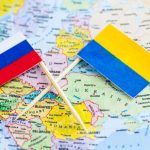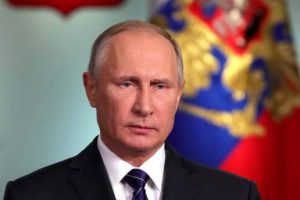 A newly published IMF strategy document calls for the implementation of a global currency, called the “bancor”, to stabilise the international monetary system, while acknowledging that only a monumental shift toward acceptance of globalism will make it possible in the short term.
A newly published IMF strategy document calls for the implementation of a global currency, called the “bancor”, to stabilise the international monetary system, while acknowledging that only a monumental shift toward acceptance of globalism will make it possible in the short term.
The IMF blueprint, authored by Reza Moghadam, director of the IMF’s strategy, policy and review department, has stayed under the radar for three months.
However, an article on the Financial Times blog alphaville, entitled IMF blueprint for a global currency – yes really, today highlights the document and the clear strategy of the global financial body.
“…in the eyes of the IMF at least, the best way to ensure the stability of the international monetary system (post crisis) is actually by launching a global currency.” Izabella Kaminska notes.
“And that, the IMF says, is largely because sovereigns — as they stand — cannot be trusted to redistribute surplus reserves, or battle their deficits, themselves.”
A chart within the document, innocuously titled Reserve Accumulation and International Monetary Stability (PDF link), presents a stepping stone system toward a fully fledged global currency:

Beginning with a vague recommendation for “voluntary policy adjustments” to be adopted by member states, the chart moves through more and more draconian economic policies toward a long term endgame of a global currency.
The chart also plots “potential resistance” to each stepping stone from sovereign states, with a spike in the short term, followed by a lull, and then a general rise as the move toward a global currency progresses over time.
The IMF’s road to a global currency hinges on a wider use of and eventual implementation of an international monetary system based on special drawing rights (SDR), the IMF’s synthetic paper currency.
Once an SDR-based system is in place, the IMF envisages just one final step to the launch of a new global currency.
The document even gives the global currency a name, the “bancor” after John Maynard Keynes’ proposed, but never implemented, World Currency Unit of clearing.
The following section of the IMF document highlights this:
48. From SDR to bancor. A limitation of the SDR as discussed previously is that it is not a currency. Both the SDR and SDR-denominated instruments need to be converted eventually to a national currency for most payments or interventions in foreign exchange markets, which adds to cumbersome use in transactions.
And though an SDR-based system would move away from a dominant national currency, the SDR’s value remains heavily linked to the conditions and performance of the major component countries. A more ambitious reform option would be to build on the previous ideas and develop, over time, a global currency. Called, for example, bancor in honor of Keynes, such a currency could be used as a medium of exchange—an “outside money” in contrast to the SDR which remains an “inside money”.
The document concludes that without a catalyst to create a sudden clamour for globalism, the implementation of a global currency will take time:
It is understood that some of the ideas discussed are unlikely to materialize in the foreseeable future absent a dramatic shift in appetite for international cooperation.
The IMF first touted the possibility of a new global currency in March of last year. The issue was then debated at the G20 Summit in London just days later.
A clause in Point 19 of the communiqué issued by the G20 leaders led to analysts describing the dawn of a “revolution in the global financial order.”
“We have agreed to support a general SDR allocation which will inject $250bn (£170bn) into the world economy and increase global liquidity,” The clause stated.
“In effect, the G20 leaders have activated the IMF’s power to create money and begin global ‘quantitative easing’. In doing so, they are putting a de facto world currency into play. It is outside the control of any sovereign body. Conspiracy theorists will love it.” Ambrose Evans-Pritchard of the London Telegraph wrote at the time.
“The world is a step closer to a global currency, backed by a global central bank, running monetary policy for all humanity.” he added.
The same conclusion was drawn by the Washington Post’s Anthony Faiola, who described how the IMF is on course to be transformed into “a veritable United Nations for the global economy.”
The move has also been endorsed separately by the World Bank and the UN.
The head of the International Monetary Fund, Dominique Strauss-Kahn, has repeated the call for a global currency via SDR multiple times.
The introduction of a new global currency and taxation system, with an overarching regulatory body, is a key cornerstone in the move towards global government, centralized control and more power being concentrated into fewer unaccountable hands.
The IMF’s push toward this kind of system is part of the ongoing movement to empower a group of unelected central bankers with the authority to usurp state sovereignty by overseeing benchmarks for national financial governance and setting regulations for financial institutions all over the globe.
Steve Watson
sursa: Infowars.com












It seems like the end is nigh, everything moves toward it. :|
God help us!